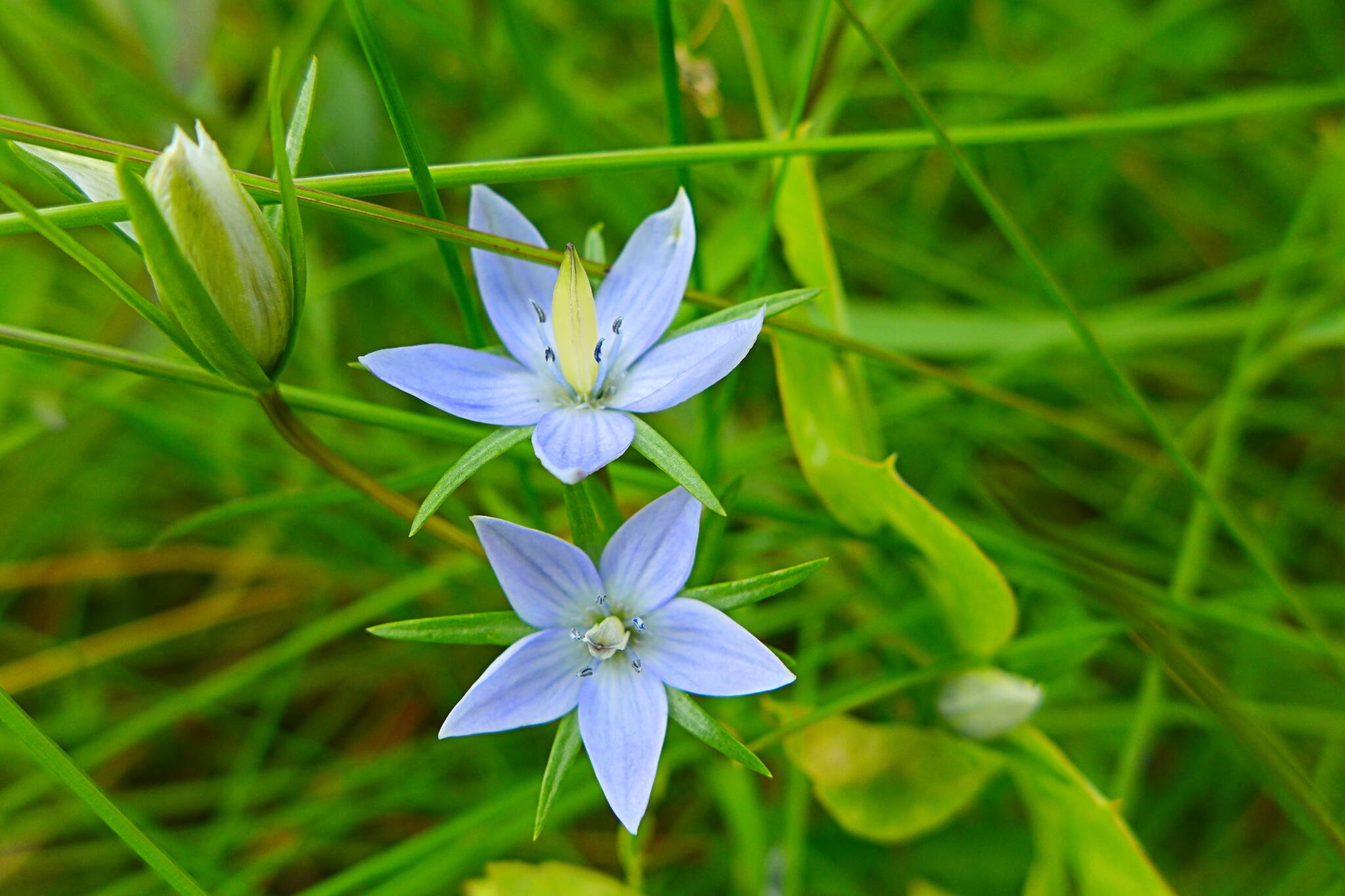On a foggy morning toward the middle of August, a friend and I went up the Mt. Roberts tram to do a little exploring. We had picked a (rare) morning on which there was only one behemoth floating hotel parked in front of downtown. The fog was so thick over the channel that arriving cruise ships sounded their fog horns.
Although we couldn’t go very far up the trail beyond the cross, due to constraints of time and gimpy knees, we found several things of interest. Purple monkshood flowers thrived, but bees seemed to prefer other flowers to visit. Groundsels and paintbrush added touches of yellow. Miniature eyebrights were only big enough to produce one or two white flowers. Some of the frog orchids were still flowering, but others had finished. Valerian flowers had set seed and dispersed them, leaving behind the framework of little stems and pedicels that once supported them. That framework now held a collection of dazzling fog droplets that sparkled even in the mists. Northern geranium had been well pollinated and many flowers had produced the tall fruits that give this plant its alternative name of crane’s bill. That “bill” is a remarkable device for dispersing seeds: The tip of the bill is a hinge, linking five shafts that hold five seeds at the base of the bill. As the bill matures and dries, those hinged shafts spring wide, backhandedly catapulting the seeds away from the parent plant.
Detectable animal life was scarce. A fat vole trotted across the trail, a white-crowned sparrow flitted through the brush, and we thought we heard a grouse clucking in a thicket. We found a marmot burrow that had been stuffed with rocks by some inconsiderate meddler. Of course I removed the rocks. The big prize happened as the fog lifted a bit and we looked down into bear valley — and spotted a bear foraging alongside a rockslide.
Two weeks later, the fireweed at sea level had gone to seed, signaling the arrival of fall (for me, if not for the official calendar). Cottonwoods were dropping some yellow leaves and a few of them were already fully bronzed and golden. Shorebirds were on the move, passing through the wetlands. On my home pond, some of the brown-plumaged mallards were showing signs of male-ness—their heads and chests sported some darker feathers. Scattered warblers (Townsend’s, Wilson’s) flitted through my yard, on their way south. Juvenile juncos of varied ages gobbled up seeds from the feeder; some were not long out of their nest while others, from different broods, were already getting some adult coloration. A hermit thrush cleaned out an entire crop of elderberries, as I watched.
On a cloudy day, I ventured up the Crow Hill trail to the Ditch. Bright red fruits of bunchberry had been nibbled by slugs and small mammals. A few tall, white orchids were just about finished blooming and the droopy white flowers of so-called rattlesnake root looked quite ragged and old. But the season of flowers was not yet over! Yarrow and yellow rattlepod continued their long flowering season, purple-flowered daisy-fleabane persisted, and little white eyebrights still looked perky. Among the late-blooming flowers is the little swamp (or Douglas) gentian, common in the muskegs near the trail. The white, star-shaped flowers can vary three-fold in size and some larger plants bear them in a branching, candelabra-like inflorescence. Wild strawberries at Eagle Beach were still blooming at the end of August.
A late-blooming species that I always like to look for is called felwort (also known as star gentian). So I went with a friend to the Boy Scout beach area, where we’ve found felwort in the past. And there, near the major junction in the trail, we found those little blue flowers. The plants are small, hidden in the tall grasses, but there were several patches of them. It is an annual, so its distribution and abundance varies from year to year. There also were lots of yellow paintbrush and scattered white flowers of northern grass of Parnassus.
Sitting on the beach out there, we watched the geese loafing about. New groups of geese flew in from the big meadow frequently, talking all the while, and usually joined the edges of a sizable gang in a lagoon. But some small clusters of geese remained separate from everybody else; one group of four slept peacefully on a sand bar, apparently undisturbed by the incoming talkers, and later took off for parts unknown. What kept that little group so separate?
Some time later, I found bear tracks in the mud on the trail. A cub with a small mama had left signs of their passage. Another sign was left near the turnoff to the horse tram trail, a fairly fresh deposit full of cow parsnip seeds (but no blueberry seeds). I was glad to know there are some bears out there; I haven’t seen very many this year.
Just for fun, I’ll include this observation: on another day and another trail, I watched a red squirrel demolish a small mushroom, eating the entire cap and rejecting the stem. The cap was probably preferred because it houses spores, which would be laden with nutrients for a germinating sporeling — but instead they nourished the squirrel. Or perhaps it just tasted good?
• Mary F. Willson is a retired professor of ecology. “On The Trails” appears every Wednesday in the Juneau Empire.

